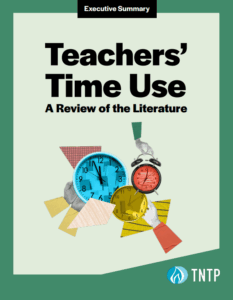Calculus can be tough—to learn, and to teach. I remembered this the other week when I was visiting a high-school calculus class in Indianapolis, where I work as a training and resource coach for new teachers.
The kids were noisy, and from where I stood at the back of the room, it was clear that they weren’t following the lesson on computing volume. As the teacher soldiered on and followed his lesson plan, they grew more overwhelmed and frustrated by the minute.
In the past, I might have followed up with the teacher afterwards to explain what went wrong and what he could have done differently—after the lesson had already fallen apart. But new technology has opened up new options for faster feedback.
I caught his eye and held up my cellphone and in-ear headphones, our signal for “put a bug in your ear.” The teacher got out his phone and silently answered my call, then slipped his phone in his pocket and discreetly put an earbud in his left ear. The students were none the wiser.
I spoke softly into my microphone. “CFU 2 students” – code for “check for understanding.” He spoke with two students and immediately saw what I did: they were definitely not on track to meet the learning objective.
“Back up and name the steps” was my second cue. The teacher then re-introduced the sample problem that had kicked off the lesson, and showed the class how to solve it, one step at a time.
I then heard “OHHHHH, that’s not so hard,” and “Ok, that makes sense now.” The students were getting it! It just took five minutes and a bug-in-ear coaching session to help the teacher get the lesson on track.
This is the kind of result that keeps me coming back to bug-in-ear coaching, which is helping many of the Teaching Fellows I coach develop more quickly than those who only receive traditional, after-the-fact coaching. We started doing it two years ago, taking a page from the pro-sports playbook. It was a no-brainer: just like pro football teams can’t afford to lose a game while they learn to improve, kids shouldn’t have to lose a class while their teacher learns to effectively break down academic content or check for understanding. With two hands-free cellphones, the coach can be right there with the teacher, offering discreet reminders that can keep a class on track.
Last year, I used it with 40 fellows in Indiana, and 15 moved an entire level up on my five-point performance scale (the difference between a “developing” and a “proficient” rating, for example). This year, we are using earbud coaching with 45 fellows, and 26 of them have moved up an entire level. While almost all of our fellows improve over the course of the school year, those coached with the bug-in-ear technology get better, faster.
This technique is not without challenges, and it’s not for everyone. I’ve found that teachers who struggle with multitasking don’t see success with bug-in-ear. And from time to time, the technology can get in the way of the work at hand, if we encounter feedback or spotty cellphone signals.
Still, the potential is enormous—provided it’s done right. Here are the two big things I’ve learned:
- Short and sweet. Keep your cues quick and use no more than two cues that align with the teacher’s development areas. In order to help streamline language, I often pull already-named techniques from Doug Lemov’s Teach Like a Champion that will help the teacher immediately improve his or her instruction and classroom management.
For example, a first-year teacher is struggling with making their behavioral expectations clear, and consistently stays at the front of the room. At the right moments, I would whisper “What to Do” to let the teacher know the exact moment when he needs to clearly explain what the students should be doing with their hands, feet, and mouths. And I would state “Circulate” when the teacher needs to move around the room to address off-task behavior or to support struggling students.
- Practice Makes Perfect. Some instructional leaders shy away from bug-in-ear coaching because they aren’t comfortable with the logistics. Teachers generally love it, but it takes some getting used to. What’s the secret? Practice. A practice run can iron out any kinks: it gives the teacher and coach a chance to agree on the cues, check on cellphone reception (or test out a walkie-talkie with earbuds) and ensure everyone is comfortable with the system before combining coaching time with class time. I usually do my practice runs during after-school study sessions, when the stakes are lower.
Time and again, we hear that teachers need feedback and support. And no wonder: it can be hard to face a challenging calculus lesson as the only adult in the room. By letting me be a bug in their ears, our teachers are getting coaching support when they need it most: right in the middle of class.








